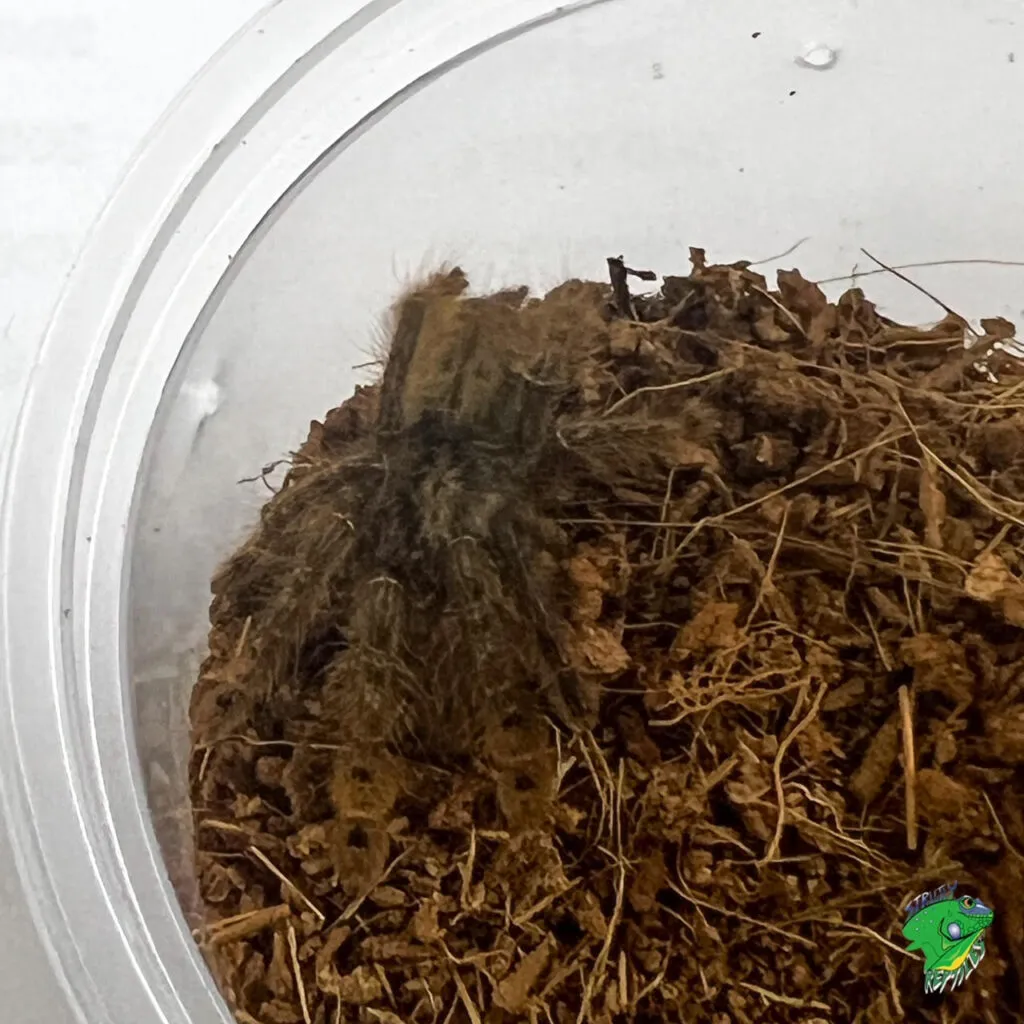Understanding the Golden Leg Baboon Tarantula
The Golden Leg Baboon Tarantula, scientifically known as Harpactira pulchripes, is a captivating species of tarantula prized by hobbyists and enthusiasts for its striking appearance and intriguing behaviors. Native to South Africa, these spiders have gained popularity due to their manageable size and the beautiful golden coloration of their legs. This guide aims to provide a comprehensive overview of how to spot and identify these fascinating creatures, covering their physical characteristics, habitat, behavior, and health considerations. Understanding these aspects will not only enhance your appreciation for this unique species but also assist you in responsible pet ownership and conservation efforts. From their intricate coloration patterns to their defensive mechanisms, we will delve into what makes the Golden Leg Baboon Tarantula so special, ensuring you gain a thorough understanding of this incredible arachnid.
Physical Characteristics
Recognizing the Golden Leg Baboon Tarantula begins with understanding its physical attributes. These spiders are not only visually appealing but also possess unique features that distinguish them from other tarantula species. Paying attention to their body structure, coloration, and overall size can greatly aid in their identification.
Coloration and Markings
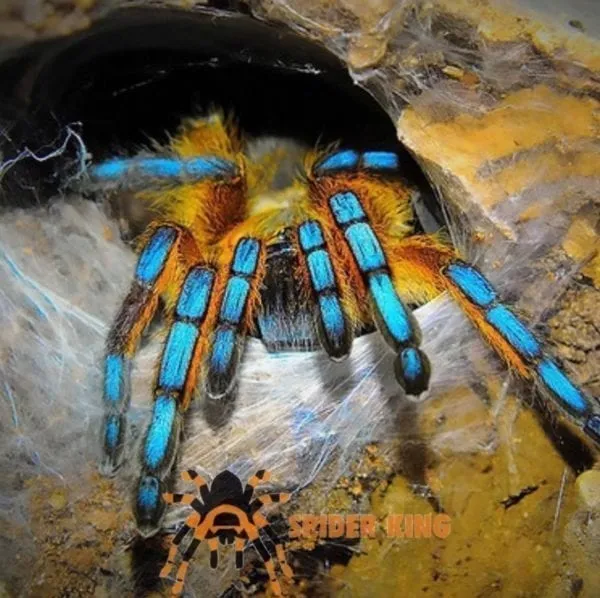
The most distinctive feature of the Golden Leg Baboon Tarantula is, as the name suggests, the golden color of its legs. This vibrant coloration contrasts beautifully with the darker body, usually a shade of brown or black. The carapace, or the top of the cephalothorax, often displays a slightly iridescent sheen, enhancing its overall attractiveness. The abdomen may feature subtle patterns or markings, but the primary focus is always on the striking golden legs. The intensity of the golden color can vary slightly depending on the individual spider and its age, but it remains a defining characteristic. These spiders have a very attractive appearance.
Size and Growth
Golden Leg Baboon Tarantulas are considered a medium-sized tarantula species. They typically reach a leg span of around 4 to 5 inches when fully grown. The spider’s size increases gradually through a series of molts, where it sheds its exoskeleton to grow larger. The growth rate of these tarantulas is relatively slow compared to some other species, with females generally living longer and growing larger than males. Observing the size and proportions of a tarantula is crucial for distinguishing it from other similar-looking species. You need to ensure that the size is within the expected range to confidently identify a Golden Leg Baboon Tarantula.
Habitat and Distribution
Knowing where a Golden Leg Baboon Tarantula is found in the wild is another key aspect of identification. Their natural habitat provides essential clues to their identity, helping to differentiate them from other species that may share similar physical traits. This section explores their preferred environment and geographical range, giving you a clearer picture of where to expect to find these tarantulas.
Natural Environment
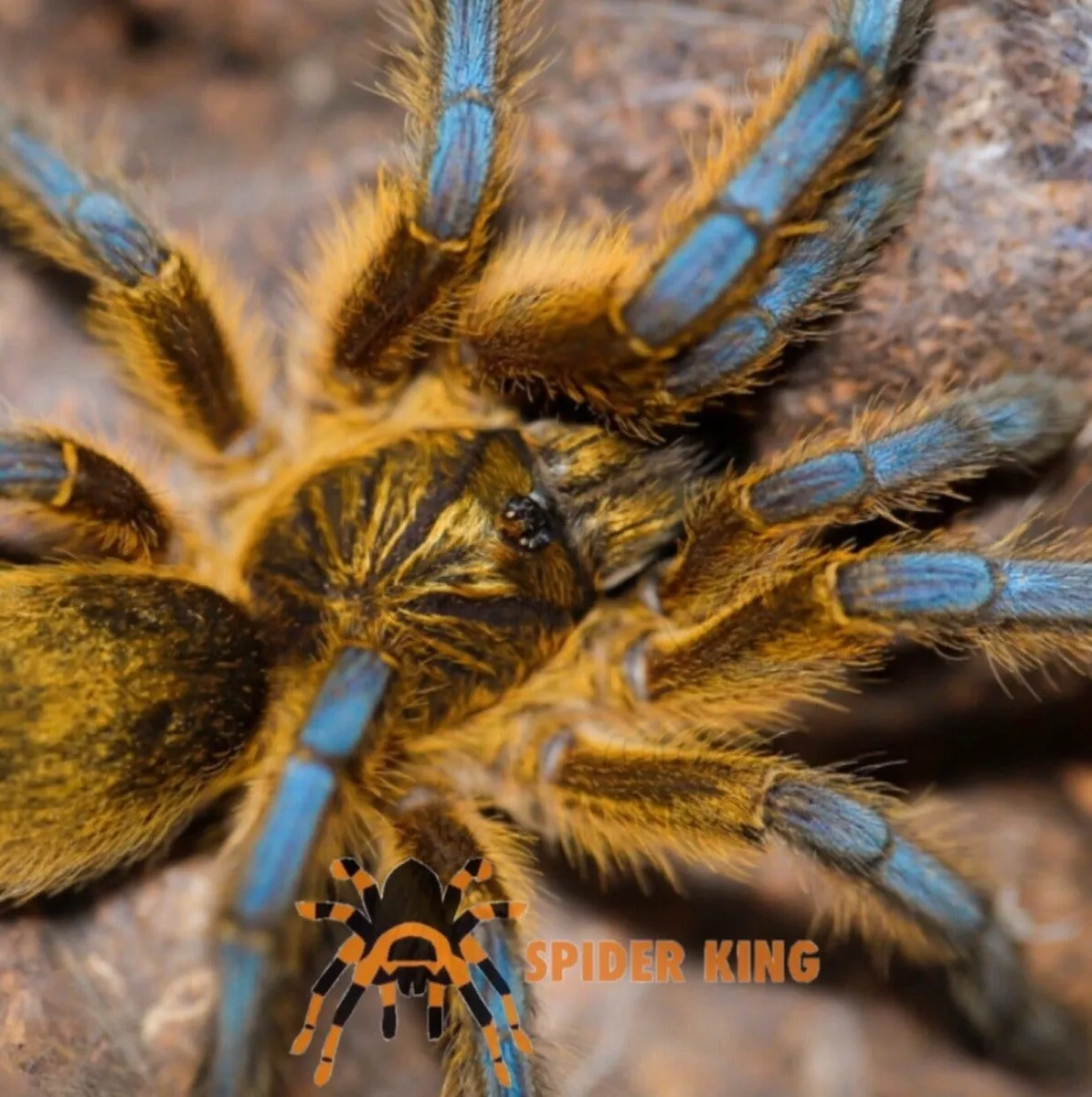
Golden Leg Baboon Tarantulas are native to the grasslands and scrublands of South Africa. They are terrestrial spiders, meaning they spend most of their time on the ground. Their habitat often includes areas with moderate humidity, providing suitable conditions for burrowing and hunting. They are well-adapted to their environment. They typically create burrows under rocks, logs, or within the soil. The presence of such structures is a sign of their natural habitat. These spiders are well-adapted to the climate and terrain.
Geographical Range
The Golden Leg Baboon Tarantula is primarily found in specific regions of South Africa. Their distribution is somewhat limited, which makes them even more special. It’s crucial to consider the location where a tarantula is found. This information can significantly narrow down identification possibilities. The best way is to check the precise geographic location of a tarantula sighting. You can then compare it to the known range of Harpactira pulchripes. The concentration of these tarantulas is around the Eastern Cape. It is important to note that their presence outside of this range, such as in other parts of the world, would likely indicate a captive-bred specimen rather than a wild one.
Behavioral Traits
Understanding the behavior of the Golden Leg Baboon Tarantula is crucial for accurate identification. Their temperament, defensive mechanisms, and overall activity levels provide valuable insights into their species. By observing these behavioral traits, you can increase your chances of correctly identifying them.
Temperament and Handling
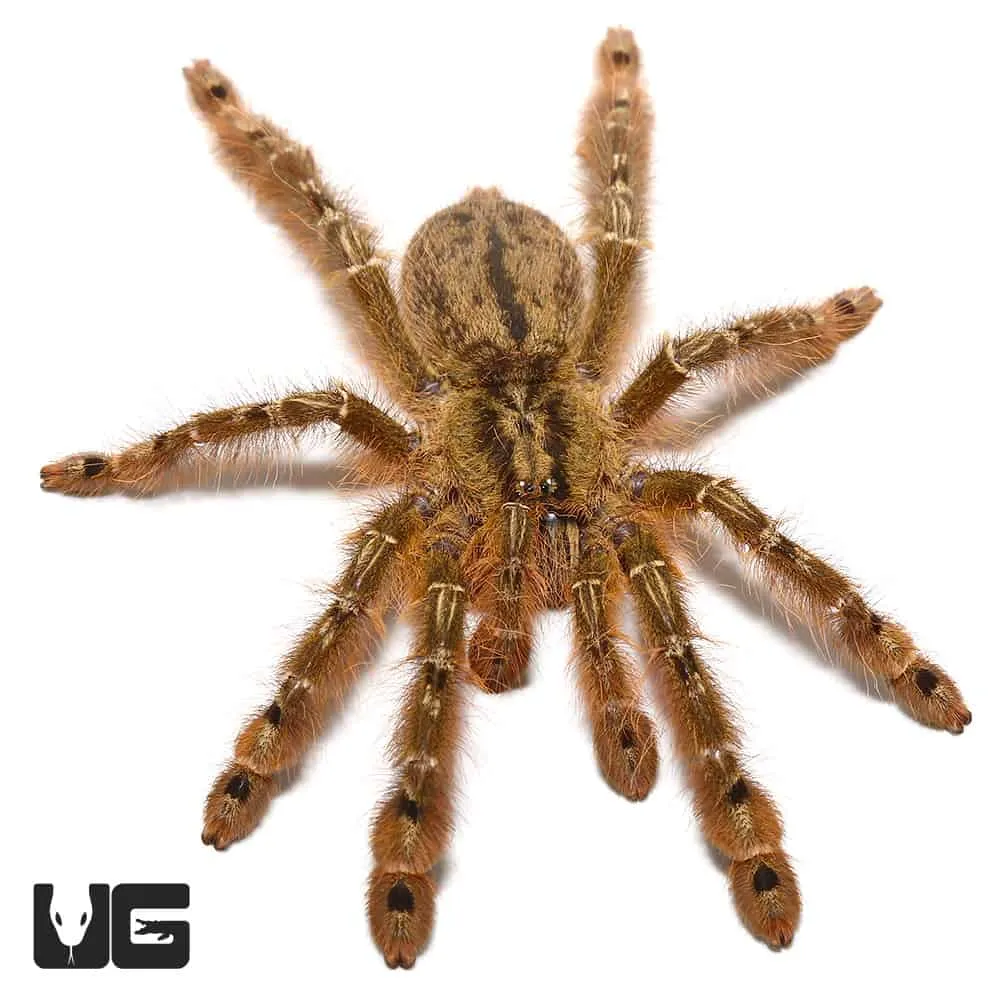
Golden Leg Baboon Tarantulas are generally known for their defensive nature. They are not typically considered to be the most docile tarantulas, and their temperament can vary between individuals. While some may be more tolerant of handling, it is generally recommended to avoid handling them unless necessary. When threatened, they may exhibit defensive behaviors such as raising their front legs, or flicking urticating hairs. It’s always important to respect their space and to observe them from a safe distance. It will prevent any defensive reactions and allow you to appreciate them without risk.
Defensive Mechanisms
Like many tarantulas, Golden Leg Baboon Tarantulas have several defensive mechanisms. The most common of these is the threat posture, where they raise their front legs and display their fangs. They may also flick urticating hairs from their abdomen, which can cause skin irritation. While they do possess venom, their bite is not considered medically significant to humans. It is more like a bee sting. Always remain cautious and avoid any actions that might provoke a defensive response. Their primary defense is running and hiding. That helps them to avoid potential predators.
Identifying a Healthy Golden Leg Baboon Tarantula
Recognizing a healthy Golden Leg Baboon Tarantula is vital for responsible care and ensuring its well-being. Observing a tarantula’s overall condition can indicate whether it is thriving or suffering from an illness. Identifying the signs of health, as well as those of illness or distress, will assist you in providing the right care. This section guides you through the key indicators of a healthy tarantula.
Body Condition and Appearance
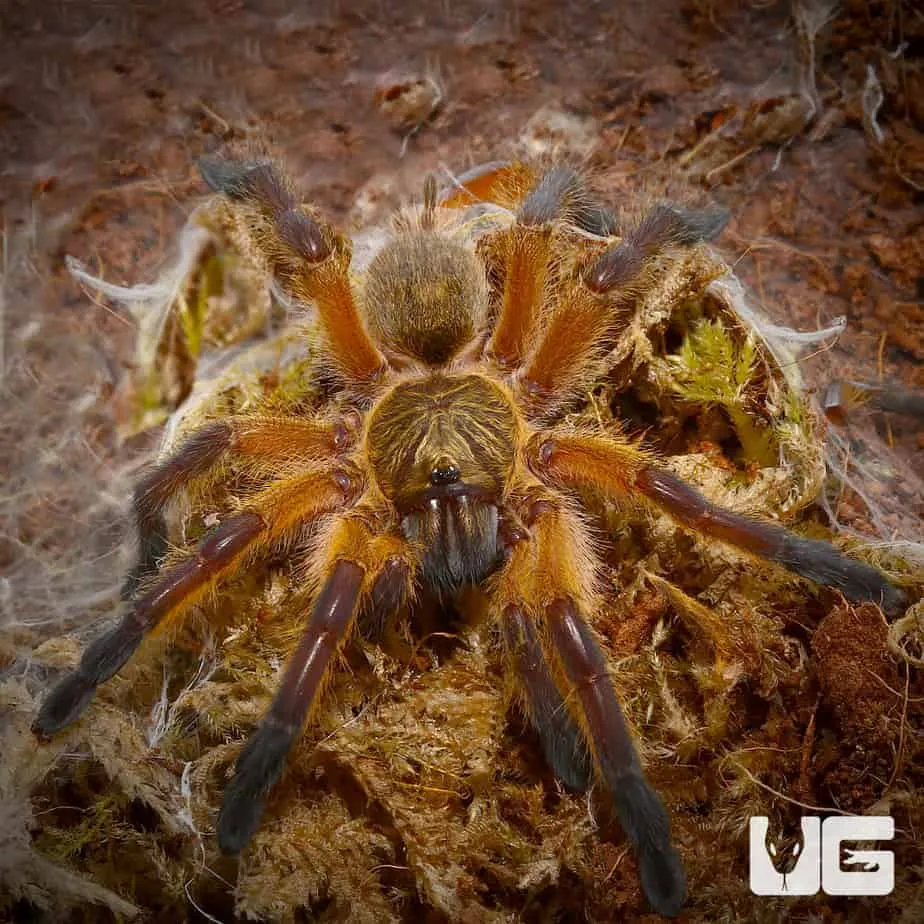
A healthy Golden Leg Baboon Tarantula will have a plump abdomen, indicating that it is well-fed and hydrated. The exoskeleton should appear clean and free from any damage or discoloration. The legs should be intact and in good condition, with no missing limbs or signs of injury. The tarantula should be alert and responsive to its surroundings. The overall appearance of the tarantula is an important indicator of its health and well-being. You should observe the spider’s body condition regularly to identify any potential health problems.
Signs of a Healthy Tarantula
A healthy Golden Leg Baboon Tarantula will exhibit several positive signs. These include a good appetite, regular feeding, and active behavior. The spider should be seen walking around its enclosure and exploring its environment. The presence of webbing and the construction of a burrow or hideaway are also signs of a content and healthy tarantula. You should watch for any of the above-mentioned factors to ensure your tarantula is doing well.
Signs of Illness or Distress
It is important to be aware of the signs of illness or distress in a Golden Leg Baboon Tarantula. These include loss of appetite, lethargy, and a lack of activity. Other symptoms to watch out for are a shrunken abdomen, which may indicate dehydration or starvation, and any unusual discharge or injuries. If you observe any of these signs, it is important to consult with a veterinarian or experienced tarantula keeper to determine the cause and provide appropriate treatment.
Molting Process
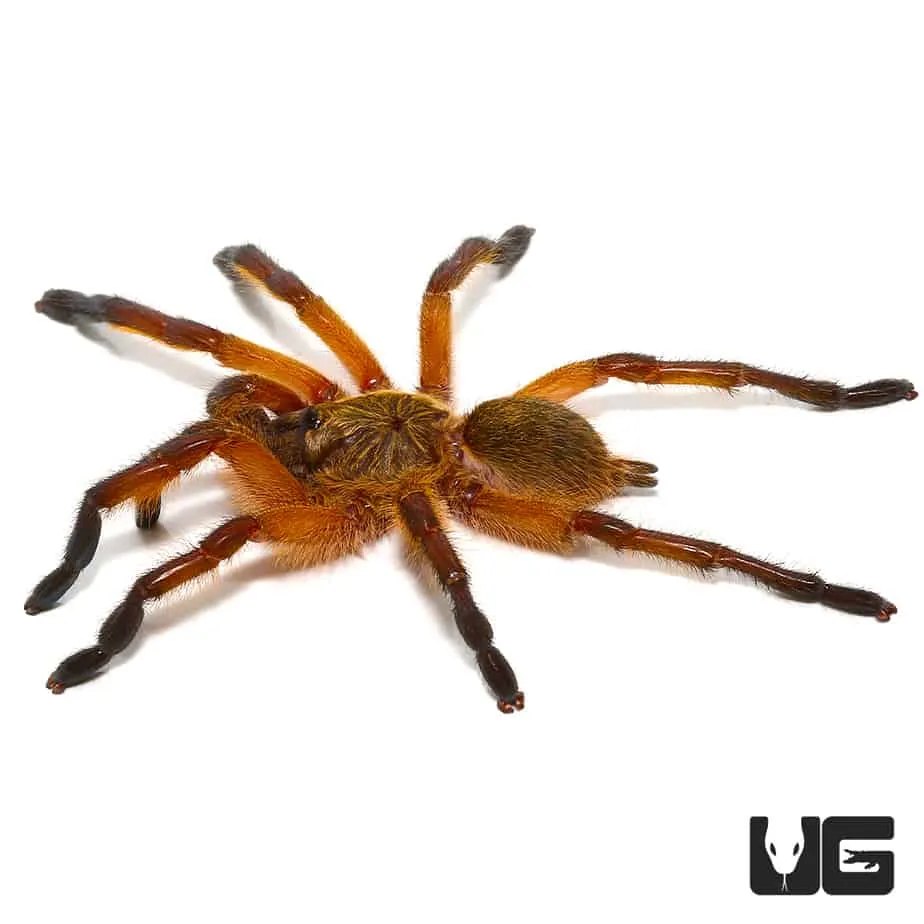
The molting process is a crucial aspect of a tarantula’s life. It is the process by which they shed their exoskeleton to grow. Understanding the signs of molting and knowing how to care for a tarantula during and after molting is essential. It will ensure that your spider remains healthy. This section provides insights into the molting process and the care your tarantula requires during that period.
Preparation for Molting
Before molting, a Golden Leg Baboon Tarantula will often stop eating and may become more reclusive. You will notice the abdomen becoming darker. The spider might also start to build a web mat or a silk hammock where it will molt. It is very important to keep the enclosure undisturbed during this period. Make sure that the humidity and temperature are suitable for the spider to molt successfully. Do not handle the tarantula at this time because it could be harmful.
Post-Molting Care
After molting, the tarantula’s exoskeleton will be soft and vulnerable. It is very important not to disturb the spider and allow its new exoskeleton to harden completely. Provide fresh water and wait a few days before offering food. The tarantula needs time to recover from molting before it can eat again. During this period, it is important to maintain a suitable environment. You should also avoid sudden movements or loud noises that may scare it.
Finding Golden Leg Baboon Tarantulas
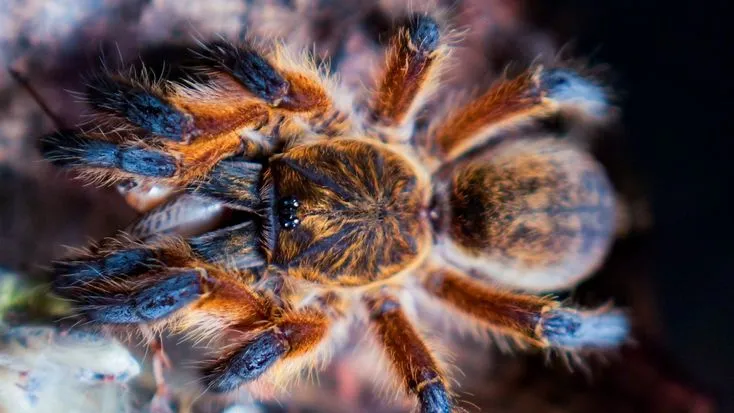
If you are interested in observing these tarantulas in their natural habitat, you will need to know where to look. This section provides details about the best places to find Golden Leg Baboon Tarantulas. Always remember to respect wildlife and their habitats. In addition, you should adhere to local conservation regulations.
Where to Look
Golden Leg Baboon Tarantulas are found in the grasslands and scrublands of South Africa. The areas with moderate humidity and rocky terrain are common. These spiders prefer creating burrows in the soil or under rocks. They are most active during the twilight hours, making it easier to spot them. Carefully search around rocky areas. You may be lucky enough to find one. Always observe from a distance. It will help you avoid disturbing the spider.
Best Places to Find Them
The best places to find Golden Leg Baboon Tarantulas are the grasslands and scrublands. Specific locations in the Eastern Cape of South Africa are prime habitats. You should consult with local experts or conservation organizations. These experts will give you the best information. They will also ensure that you are aware of any specific permits or restrictions. Always be respectful of the environment and avoid disturbing the habitat. This ensures the well-being of the tarantulas and the preservation of their natural environment.
What to do if you found one
If you are fortunate enough to spot a Golden Leg Baboon Tarantula in its natural habitat, observe it from a distance. Avoid any sudden movements or actions that might scare the spider. Take photos or videos to document your sighting. Never try to catch or handle the tarantula. It is very important to respect its natural environment. Report your sighting to local conservation authorities. This will help them monitor the population and contribute to conservation efforts. By acting responsibly, you can help protect these incredible creatures.
Conclusion
Identifying a Golden Leg Baboon Tarantula requires attention to detail, knowledge of their habitat, and awareness of their behavior. By understanding their physical characteristics, recognizing their natural environment, and observing their defensive mechanisms, you can confidently spot these fascinating spiders. Remember to prioritize their well-being, and avoid any actions that might disturb them. If you are considering keeping a Golden Leg Baboon Tarantula as a pet, do your research and provide them with the appropriate care. With your knowledge and understanding, you can appreciate the beauty and wonder of these incredible creatures.
